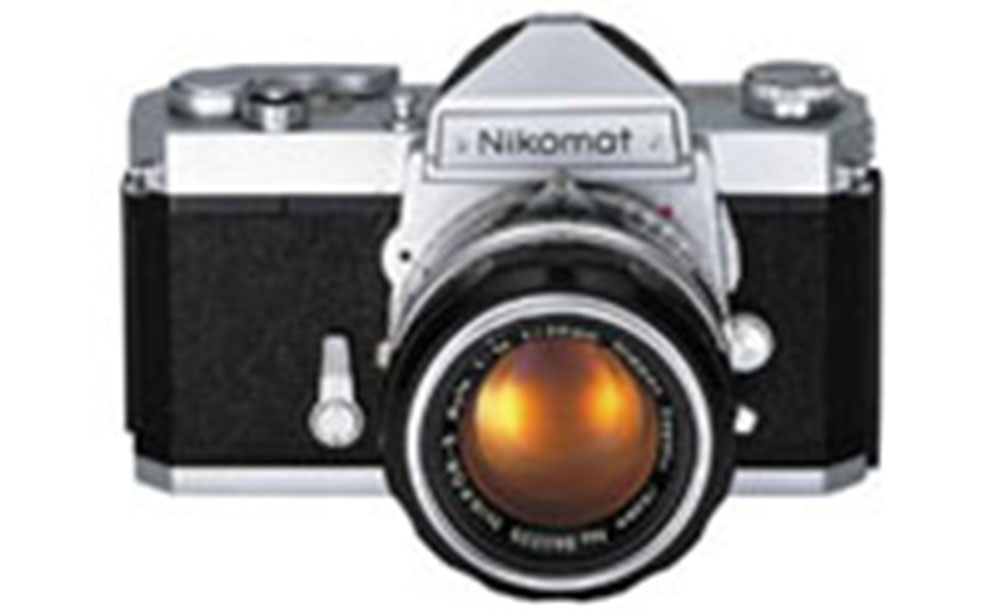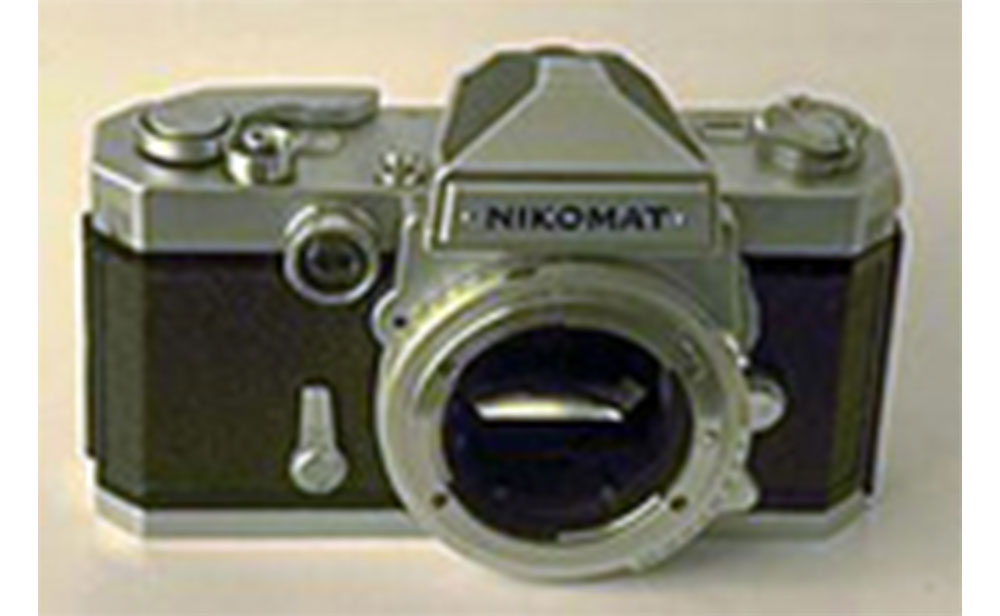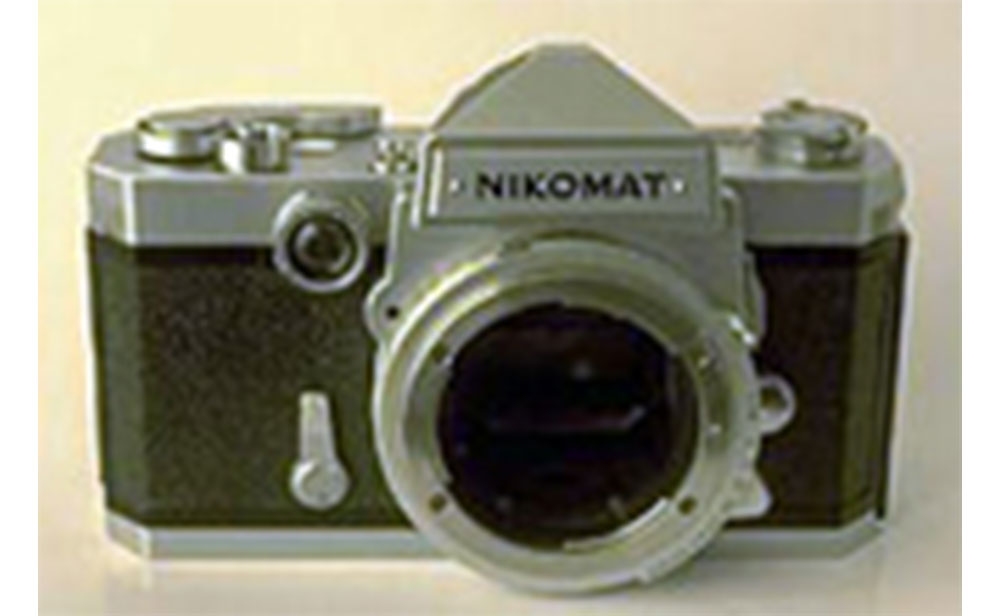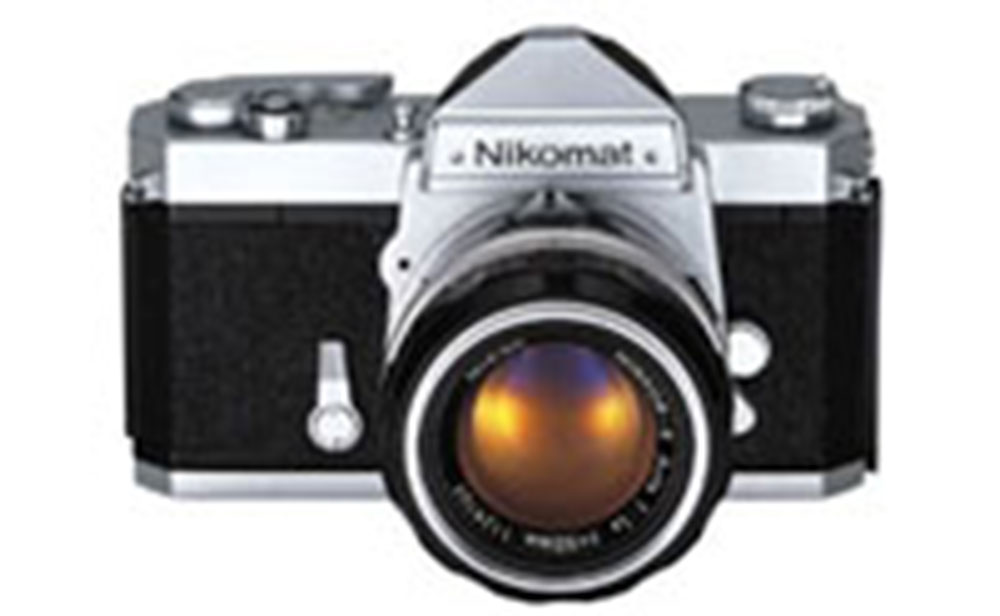Part 5 : "Nikomat FT / FS"
Focal plane shutter SLR with coupled exposure meter

Around 1962, the camera manufacturers started to incorporate an exposure meter into the focal plane shutter SLR.
The first built-in exposure meters using selenium photocells were soon replaced by highly sensitive CdS (cadmium sulfide) cells.
Although most competing products featured what were called "built-in coupled exposure meter", only shutter speed was coupled and thus the photographer had to set aperture value after reading the indicator.
At this point, Nippon Kogaku K. K. had a great advantage compared to the competition.
When the Nikon F was released, every interchangeable Nikkor-Auto lens had an aperture-coupling claw, known as the "crab claws", and thus enabling to transfer the aperture value information to the exposure meter.
Taking this advantage, the Nikon F's "Photomic finder", in fact, featured a "full coupled" built-in exposure meter.
Those who used the Nikon F could gain the benefit of this new feature upgrade simply by buying the newest Photomic viewfinder as a replacement finder. However, since all new functions were incorporated into the Photomic finder, the camera body seemed to be a little bit unbalanced.
Like other manufacturers' cameras, the exposure meter should have
been provided in the body top cover for smart camera body.
On the other hand, lens shutter SLR cameras with quick-return mirror and automatic exposure mechanism, like the Nikon AUTO 35 (see previous issue Vol. 4.) were losing their raison d'etre.
The need for an impressive standard-class model to back up the Nikon F in a premium line of cameras gave rise to the Nikomat FT.
Cost-intensive design
The experience of making the NIKKOREX 35 series (see Part 1.) and NIKKOREX F (see Part 3.) came to conclusion that Nippon Kogaku K. K. should design its own standard models, and manufacture it in its own factory.
In respect of standard model, the price should be reasonable.
The quantity should be greater than that of the top-tier Nikon F.
In order to achieve the low cost production and high productivity required, design concept had to be reconsidered from scratch.
Although not every NIKKOREX series camera sold well, making them made the company increasingly adept at reducing costs from the basic design stage.
When comparing the inner parts of Nikomat FT with those of Nikon F, you will notice the big differences between the two with regard to design philosophy.
It is natural that winding / shutter-charging mechanisms are different, because the shutter systems adopted are totally different.
In addition, the size and shape of Nikomat's mirror-operation mechanism parts were specifically designed for easier machining and assembling.
Body-diecast design was a major consideration. In previous SLR cameras, three(3) big diecast parts comprised the body-diecast :
- 1.Camera body, where the winding mechanism and shutter mechanism are located,
- 2.Mirror box, where mirror mechanism and optical viewfinder are located, and
- 3.Front panel, where the lens mount mechanism is located.
With the Nikomat FT, two(2) separate diecasts, the mirror box and front panel, were merged into one diecast part, and made great savings of materials and costs.
Such an arrangement causes difficulty in fitting parts to certain places, such as front side of the mirror box.
Several bright ideas solved this problem.
This structure was applied to all Nikomat-type cameras, including the Nikon EL2 released in 1977, until the Nikon FM in 1977 adopted the mirror box constructed of metal plates and abandoned this structure.
About the 10 millimeter x 10 mm flat-top surface
When it came to designing the Nikomat FT, upper management demanded that it be made to resemble the Nikon F's.
An influence is visible in such as the leather pasted on the pentaprism cover and the octagonal body shape.
However, the two cameras initially differed in their pentaprism cover shape; that of the Nikon F was pointed, and that of the Nikomat FT had a 10 mm x 10 mm flat surface on top.
This distinction resulted from the conviction of the young designer, new at the time to the company, that making the new camera resemble the Nikon F would detract from the distinctiveness of the Nikomat FT.
He might have seemed stubborn in resisting the chief designer's wish to make the Nikomat FT resemble the Nikon F, but later came around to see the correctness of his superior's point of view.
The Nikomat FT's success greatly influenced Nippon Kogaku's future camera business, as we will examine later.
It's interesting to speculate how things would be different had the newer camera adopted the pointed top shape, rather than the 10 mm x 10 mm flat surface.
"NIKOMAT" was not born with TTL metering
In early 1965, a group consisting of CEOs involved in cameras, Nikomat's senior design manager, and authorities from each Nippon Kogaku K.K. Camera Division section gathered in Tokyo to discuss the pros and cons of Nikomat adopting TTL metering.
The original concept was for the Nikomat to have a coupled exposure meter using external metering system.
However, the 1963 release of the first TTL SLR camera Topcon RE Super and the 1964 release of the Asahi Pentax SP marked the dawn of built-in TTL exposure meter cameras.
Would an external metering camera be a good idea ?
The Nikomat was already at the final stage of development ; changes would take a lot of effort.

After a tough debate, the group decided to change to TTL metering, sparking a flurry of research on TTL metering.
Design and plans for mass production of the Nikomat had to be revised.

Sample model with built-in
external exposure metering
system
The metal form of the diecast which had been built had to be changed, requiring a trip to the diecast manufacturer in Shinagawa-Ku, Tokyo.
However, this change in dicast was not accomplished in time for the first lot of the Nikomat FT.
The front plate diecast of early products had a small hole opened for external metering sensor, and a thin metal plate clogged the hole as a stopgap measure.
The Nikomat FT was released on July 1965 after a remarkably short four-to-five-month reformation and development process.
In the process of writing this, a sample model with the external metering system was discovered in storage at the Camera Development Division.
Aside from the font used for the name NIKOMAT, the camera is almost identical to the Nikomat FT released.
The exposure meter system's condenser lens next to the apron describes the aforementioned story.
Nikomat FT : A success

Nippon Kogaku K.K. had a big hit with the Nikomat FT, augmenting Nikon F sales with a much-needed boost.
It can be hard to evaluate history in hindsight, but it's interesting to consider how Nippon Kogaku's cameras would have developed differently if Nikomat FT was released with external metering, or if the Nikomat was not developed due to failure of previous standard models.
These considerations make me treasure the Nikomat FT even more.
Note
This issue first appeared in "Nikkor Club Quarterly" magazine , published by the Nikkor Club, and was revised for Nikon's webpage.
Products, brands and companies names are trademarks or registered trademarks of their respective companies.
Camera Chronicle
Archives of corporate history subject matter related to Nikon cameras, including rare materials, as well as product photos of cameras and lenses.
